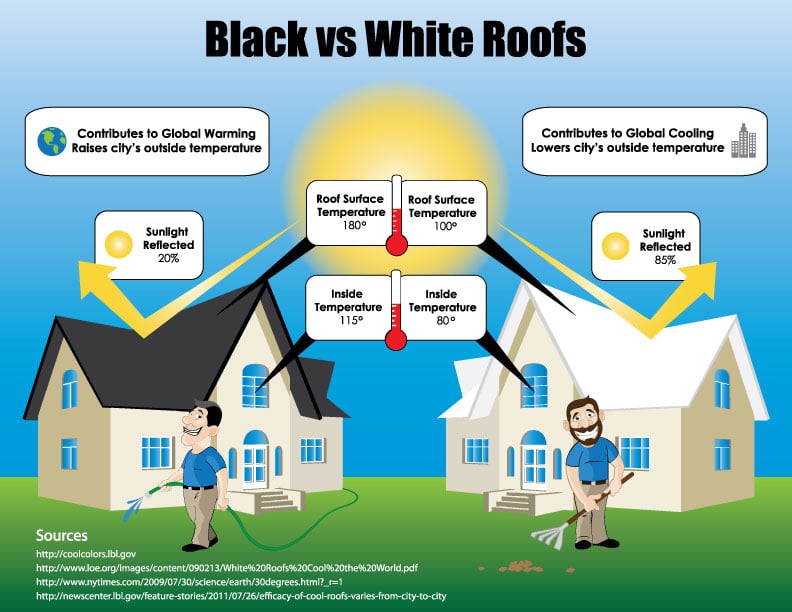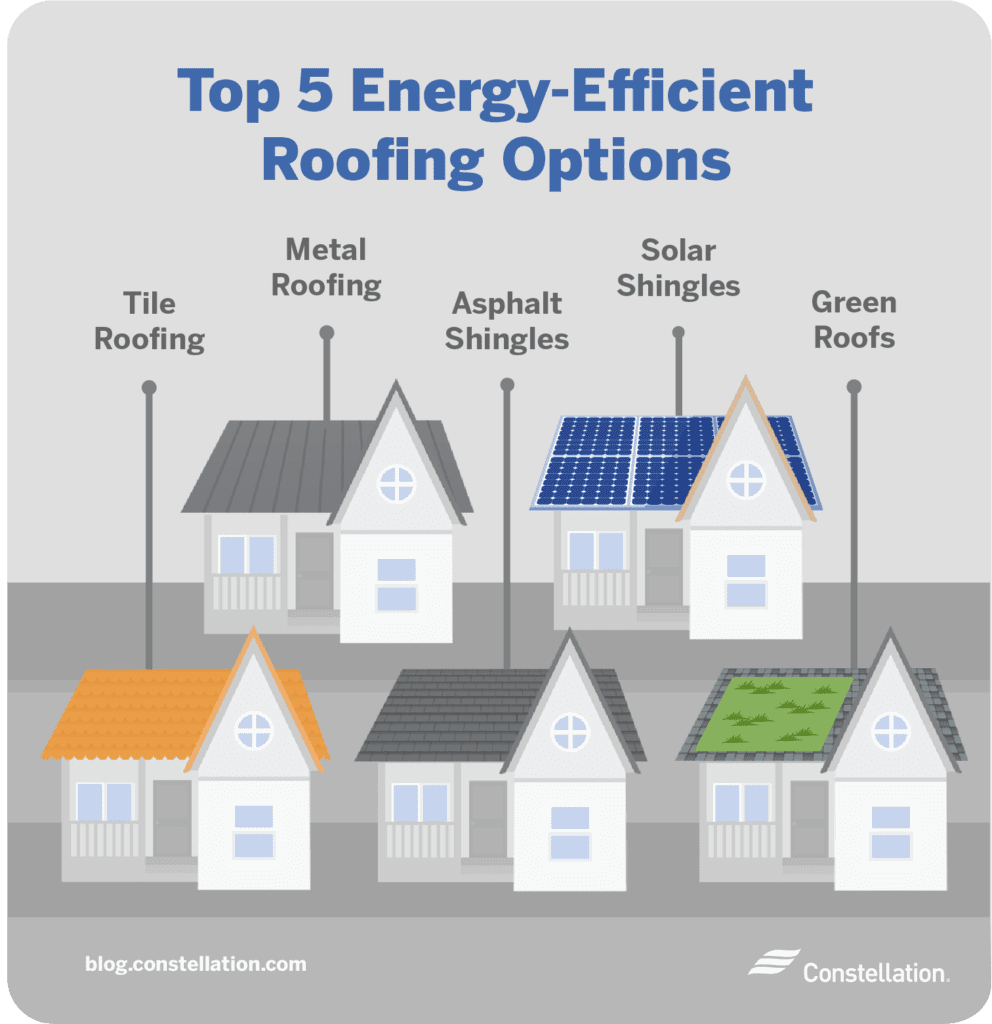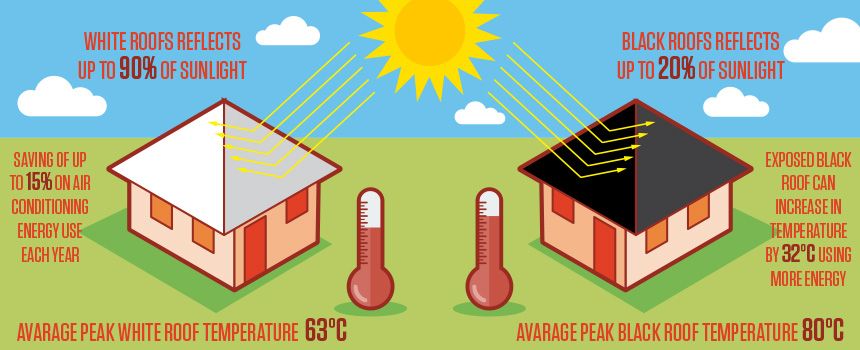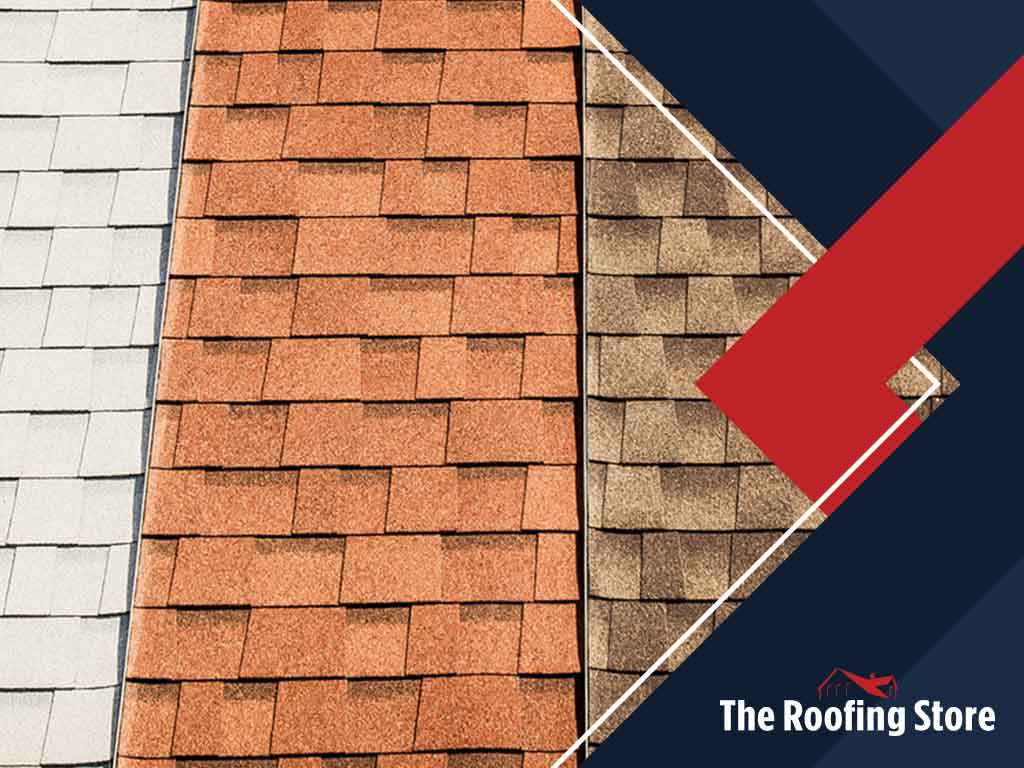When it comes to making your home more energy efficient, have you ever stopped to consider the color of your roof? Believe it or not, the color of your roof can have a significant impact on your energy consumption and overall environmental footprint. In this article, we will explore the different colors of roofs and their energy efficiency, providing you with valuable insight on how to choose the most eco-friendly option for your home. Get ready to discover how something as simple as a roof color can make a big difference in conserving energy and reducing your carbon footprint.

Understanding energy efficiency in roofing
Defining energy efficiency
Energy efficiency in roofing refers to the ability of a roof to effectively manage the flow of heat, light, and air, thereby reducing the energy consumption of a building. It involves various factors such as insulation, ventilation, and the color of the roof surface. By maximizing energy efficiency in roofing, you can minimize the overall energy consumption of your building, leading to cost savings and a reduced environmental impact.
Importance of energy efficiency in roofing
Energy efficiency in roofing is crucial for several reasons. Firstly, it helps to reduce the energy consumption of a building, which in turn lowers utility bills. Secondly, it contributes to environmental sustainability by reducing greenhouse gas emissions associated with energy production. Lastly, an energy-efficient roof can enhance the comfort and livability of a building by maintaining consistent interior temperatures and minimizing heat loss or gain. Understanding the factors that affect energy efficiency in roofing can help you make informed decisions when choosing the right roof for your needs.
Factors affecting energy efficiency in roofing
Several factors influence energy efficiency in roofing. These include roof color, insulation, ventilation, and the presence of solar panels. Each of these factors plays a crucial role in determining how effectively heat is absorbed, transferred, and released from your roof. By considering all these aspects, you can optimize the energy efficiency of your roofing system.
The impact of roof color on energy efficiency
Role of roof color in energy absorption
The color of your roof plays a significant role in how much solar energy it absorbs. Dark-colored roofs, such as black or dark gray, tend to absorb more heat from the sun, leading to increased heat transfer to the building’s interior. Conversely, lighter-colored roofs, like white or light gray, reflect more solar energy and absorb less heat. Therefore, the color of your roof surface can directly impact the energy efficiency of your building.
Effect of roof color on heat transfer
The color of your roof affects not only how much solar energy it absorbs but also how that energy is transferred throughout the roofing system. Dark-colored roofs can quickly transfer absorbed heat into the building, potentially leading to higher cooling loads. In contrast, light-colored roofs minimize the transfer of heat, which can be particularly advantageous in warmer climates.
Roof color and solar reflectance
Solar reflectance, also known as albedo, measures how much solar energy a roof reflects. This measurement is influenced by roof color, with lighter-colored roofs having higher solar reflectance values. Roofs with high solar reflectance help to reduce the heat island effect, where urban areas become significantly warmer due to the absorption and retention of heat. By opting for a roof color with high solar reflectance, you can contribute to mitigating this effect and improving energy efficiency.
Cool roofs: The energy-efficient choice
What are cool roofs?
Cool roofs are roofing systems designed to reflect more sunlight and absorb less heat than traditional roofs. These roofs are commonly found in hot climates but can also be beneficial in moderate or cold regions. Cool roofs can be made of various materials, including shingles, metal, or tiles, as long as their color and properties optimize energy efficiency.
Advantages of cool roofs
Cool roofs offer several advantages in terms of energy efficiency. By reflecting a larger amount of solar energy, they can keep the building’s interior cooler, reducing the need for air conditioning and therefore lowering energy consumption. Additionally, cool roofs can extend the lifespan of the roof itself, as they are exposed to less thermal stress from excessive heat absorption. This longevity translates into lower maintenance and replacement costs, making cool roofs a cost-effective option in the long run.
Popular cool roof colors
When it comes to cool roofs, certain colors are more energy-efficient than others. Light-colored roofs, especially white or light gray, are frequently used for their high solar reflectance properties. However, cool roof technology has advanced, and manufacturers now offer a wider range of colors that also meet energy efficiency requirements. Light blues, greens, and even certain shades of tan or beige can also be considered cool roof colors, providing both aesthetics and energy savings.
White roofs vs. dark roofs
White roofs: Benefits and considerations
White roofs, with their high solar reflectance properties, offer significant benefits in terms of energy efficiency. In hot climates, they can reduce cooling costs by reflecting a significant portion of solar energy, thereby minimizing the cooling load on the building. White roofs also tend to stay cooler than dark roofs as they absorb less heat. However, in colder climates, it is essential to consider the potential loss of beneficial heat gain during the winter months.
Dark roofs: Benefits and considerations
Dark roofs, such as black or dark gray, have their own set of benefits and considerations. They absorb more heat, which can be advantageous in colder climates as it helps to melt snow and ice more quickly. This heat absorption can also contribute to beneficial heat gain during the winter, reducing heating costs. However, in warmer climates, dark roofs can increase cooling loads and energy consumption. It is crucial to consider this trade-off between heat absorption and cooling requirements when choosing a roof color.
Comparing energy efficiency of white and dark roofs
Numerous studies have compared the energy efficiency of white and dark roofs. While white roofs generally outperform dark roofs in hot climates, the results can vary depending on factors such as climate, insulation, and ventilation. In colder climates, dark roofs may provide better energy efficiency by facilitating heat gain during the winter. It is crucial to evaluate your specific climate and building requirements to determine which roof color will provide the most energy-efficient solution.

Climate considerations for roof color
Hot climates
In hot climates, it is crucial to choose a roof color that maximizes energy efficiency and minimizes cooling loads. Light-colored roofs, such as white or light gray, are generally recommended as they reflect a significant portion of the sun’s energy. These roofs can reduce the cooling load and energy consumption of the building, leading to cost savings and improved comfort.
Cold climates
In colder climates, the role of a roof color in energy efficiency differs from that in hot climates. Dark roofs can be advantageous as they absorb more heat, helping to melt snow and ice faster. This heat absorption also contributes to beneficial heat gain during the winter, reducing heating costs. In colder regions, it is essential to consider this trade-off between heat absorption and cooling requirements when selecting a roof color.
Moderate climates
In moderate climates where both heating and cooling are required, finding the right balance is crucial. Light-colored roofs can help to minimize cooling loads during hot seasons, while dark roofs can aid in heating efficiency during colder months. In these regions, it may be beneficial to consider the use of cool roof technologies that offer a good compromise between energy efficiency and climate adaptability.
Adapting roof color to different climate zones
Adapting roof color to different climate zones is essential to optimize energy efficiency. Understanding the specific environmental conditions and considering factors such as average temperatures, solar intensity, and cooling or heating requirements can help you choose the most appropriate roof color for your region. Consulting with roofing professionals or energy efficiency experts can provide valuable insights into the best color choices for your specific climate.
Other factors influencing energy efficiency
Roof insulation
Roof insulation is a critical factor in ensuring energy efficiency. Proper insulation helps to minimize heat transfer between the roof and the interior space, maintaining comfortable indoor temperatures and reducing the energy needed for heating or cooling. Combining adequate insulation with an energy-efficient roof color can further enhance the overall energy efficiency of your roofing system.
Ventilation and air circulation
Proper ventilation and air circulation in the roof cavity are essential for maintaining energy efficiency. Ventilation helps to remove excess heat and moisture, preventing the build-up of heat in the attic or under the roof. This reduces the strain on cooling systems and enhances the overall energy efficiency of the building. It is important to ensure that your roofing system incorporates proper ventilation to maximize energy savings.
Solar panels
The installation of solar panels on your roof can significantly impact energy efficiency. Solar panels capture sunlight and convert it into electricity, providing an alternative and renewable energy source. By combining an energy-efficient roof color with solar panels, you can maximize the potential for energy generation, offsetting your electricity consumption and reducing your carbon footprint.

Case studies: Measuring energy efficiency
Research studies on roof color and energy efficiency
Several research studies have been conducted to measure the impact of roof color on energy efficiency. These studies have explored the effects of different roof colors on cooling loads, energy consumption, and indoor thermal comfort. The results have generally shown that lighter-colored roofs tend to result in lower cooling costs and improved energy efficiency in hot climates, while the benefits may vary in colder regions. Research can provide valuable insights into the energy-saving potential of different roof colors in various climate zones.
Real-life examples
Several real-life examples demonstrate the energy-saving potential of different roof colors. For instance, in hot climates like Arizona, buildings with white or light-colored roofs have seen significant reductions in cooling costs and improved interior comfort. Conversely, in areas with colder climates like Alaska, dark roofs have been shown to contribute to efficient snow and ice melting. These examples highlight the importance of considering regional climate conditions when choosing a roof color to maximize energy efficiency.
Considerations before choosing a roof color
Home design and aesthetics
When selecting a roof color, it is essential to consider how it will complement your home design and overall aesthetics. The roof is a highly visible element of your building and significantly contributes to its exterior appearance. Choose a roof color that harmonizes with the architectural style and color scheme of your home, while balancing your energy efficiency requirements.
Local regulations and homeowner associations
Before deciding on a roof color, be sure to check local regulations and homeowner association guidelines. Some regions have specific rules or restrictions regarding roof colors, particularly in historic or conservation areas. Understanding these regulations can help you navigate the color selection process and ensure compliance with any necessary guidelines.
Maintenance and cleaning
Different roof colors may require varying levels of maintenance and cleaning. Light-colored roofs tend to show dirt and debris more readily, requiring more frequent cleaning. On the other hand, dark roofs may be more forgiving in terms of visible stains or discoloration. Consider the level of maintenance you are willing to undertake when choosing a roof color that suits your lifestyle and preferences.

Cost implications of roof color
Cost differences between roof colors
The cost of different roof colors can vary depending on the materials and finishes used. While some cool roof colors may require specialty coatings or unique pigments, standard colors such as white or dark gray are usually readily available at comparable prices. It is important to discuss the cost implications of different roof colors with your roofing contractor to make an informed decision that aligns with your budget.
Potential energy savings and return on investment (ROI)
Although installing an energy-efficient roof may have an initial cost, it is crucial to consider the long-term energy savings and return on investment. By reducing energy consumption and associated costs, an energy-efficient roof can provide significant financial benefits over its lifespan. Energy modeling studies and consultations with roofing professionals can help you estimate the potential energy savings and calculate the ROI associated with different roof colors.
Conclusion
Understanding energy efficiency in roofing is essential for making informed decisions when choosing the right roof color for your building. Factors such as roof color, insulation, ventilation, and the presence of solar panels all contribute to the overall energy efficiency of your roofing system. By selecting an energy-efficient roof color that aligns with your climate, aesthetic preferences, and budget, you can optimize energy savings, reduce environmental impact, and enhance the comfort of your living or working space. With the diverse range of cool roof colors available today, there is a color for every climate and style, making energy efficiency a viable and aesthetically pleasing option for all.
